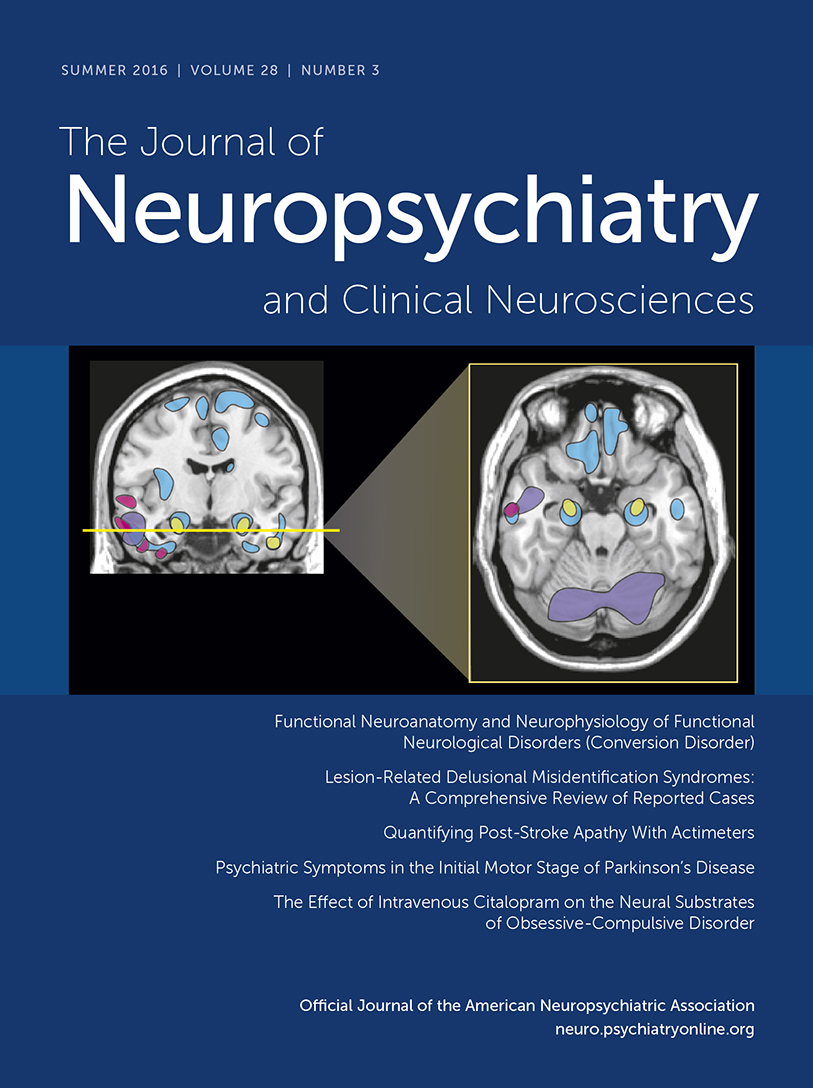Psychogenic Ophthalmologic Movement Disorders
Abstract
In this study, the authors retrospectively identified 11 patients with psychogenic ophthalmologic movement disorders (POMDs) (6%) among 182 patients with psychogenic movement disorders (PMDs), using medical charts and video reviews. The phenomenology included oculogyric crises (N=7), opsoclonus (N=5), and ocular flutter (N=1). No statistically significant differences were observed in gender and PMD distribution between patients with and without POMDs, although a trend for younger age at onset was observed in patients with POMDs. Seven patients showed improvement with psychotherapy, whereas two patients with persistent ocular supraversion and blepharospasm failed to improve. Based on our own series and review of literature, we conclude that POMDs contribute to the overall morbidity in patients affected with PMDs.



